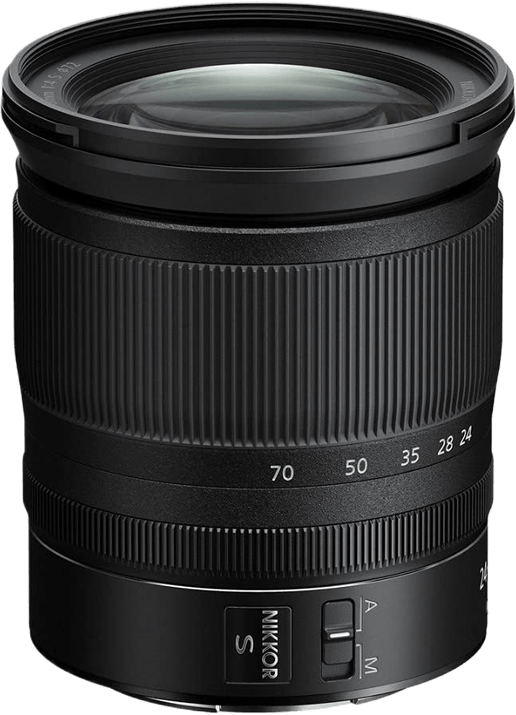Without a camera lens, your camera body could not capture images. And it’s important to choose the right lens because it helps you reach your camera’s greatest potential.
Without a good camera lens, you see a loss in image resolution and quality. So, read our camera lens guide to find all the information you need about lenses.
What Is the Use of a Camera Lens in Photography?
A camera lens focuses and directs light onto the camera’s image sensor or film. It lets the camera capture images by controlling aspects like framing, perspective, depth of field, and the light entering it.
Camera lenses let you manipulate and control the visual aspects of your photographs. It lets you influence factors like sharpness, distortion, and other artistic choices for shooting a scene.
Is a Camera Lens More Important Than the Camera Body?
Yes, camera lenses, like it or not, are the most important part of your photography kit. A camera lens determines the aperture range you can use, the possible depth of field, and the focusing distance.
Camera bodies allow other settings like ISO and shutter speed. They influence the quality of the image through resolution. But they are not as important as lenses.
Usually, your lens can’t resolve as much information as your camera can provide. So, the quality of your lens determines how much detail it can manage.
You can have a high-resolution camera with 40 MP (megapixels) and not be able to take advantage of it. Generally, buying an expensive lens for a not-so-expensive body is better. This way, you can maximize the image resolution. You can check out our list of the top lenses we recommend.
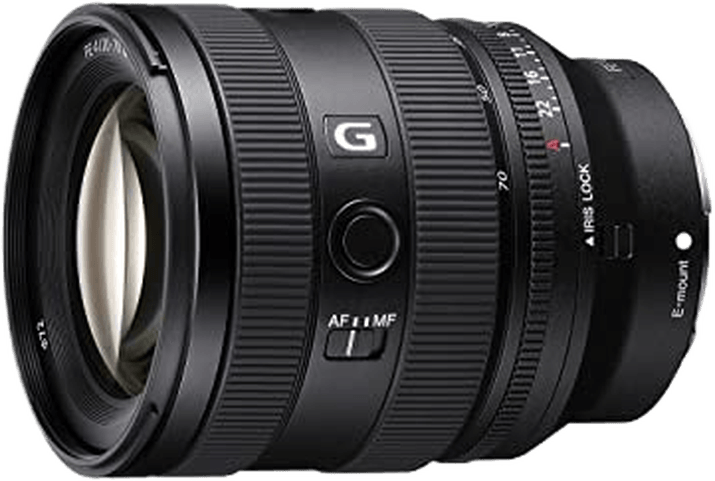


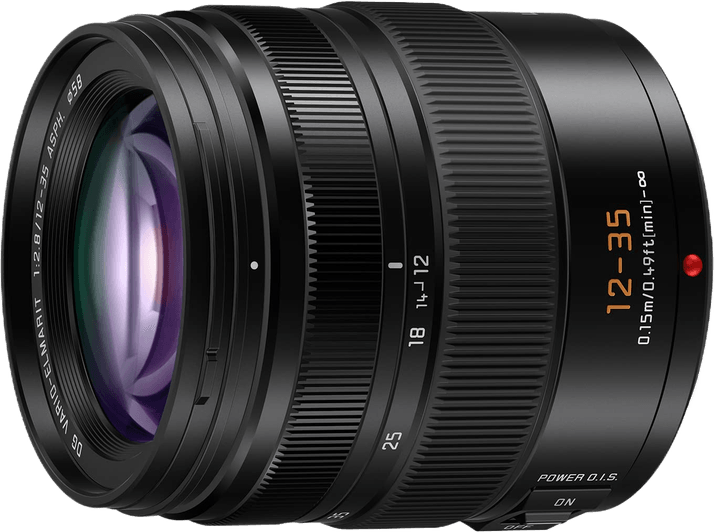
How Lenses Work
So, how do lenses work? A camera lens is a complex optical system. It focuses light onto the camera sensor or film to create an image. We’ll go through some basic details that show how a lens helps take a photo.
First, lens elements are shaped glass pieces that bend light in specific ways. Each element has a different function, and they work together in harmony. Some pieces are fixed to the lens barrel, and others are movable. These let you zoom or focus or assist in image stabilization.
Here’s a basic breakdown of the main components of a camera lens (shown in the diagram below):
- Front Element: This is the foremost piece of glass that faces the subject. Its primary function is protecting the inner lens elements and bending or refracting light as it enters the lens.
- Lens Groups: Most camera lenses consist of multiple lens elements grouped together. Each group comprises one or more individual lens elements. These elements work together to refract and focus light onto the camera sensor. Lens groups can be designed to correct optical aberrations. This includes distortion, chromatic aberration, and spherical aberration.
- Aperture: This is an adjustable opening within the lens. It controls the amount of light passing through. It is typically composed of multiple blades. These can contract or expand to change the size of the opening. The aperture size affects the depth of field (the range of sharp focus) and the image’s exposure.
- Rear Element: This is the last piece of glass within the lens. It is positioned closest to the camera sensor or film. Its role is to help focus the light gathered by the lens elements onto the sensor or film plane.

When light travels through your camera lens, the image is flipped upside down (pictured below). This is the same way our eyes see the world.
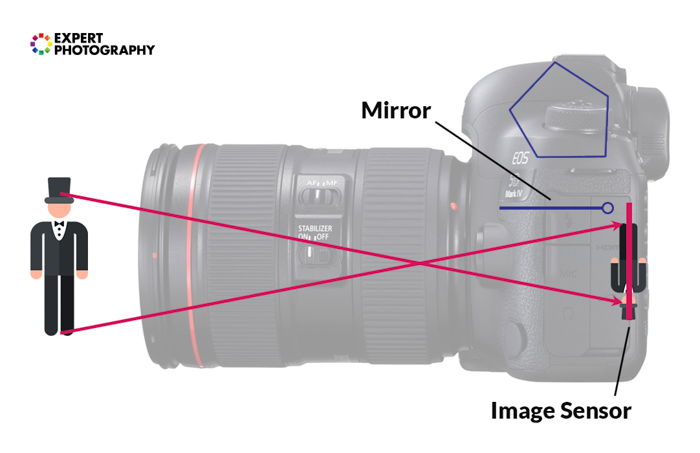
In our case, our brain rotates the image. Inside the camera, a pentaprism flips the image the right way up. As you can see in the image below, there is an intersection inside the lens. This intersection is the convergence between the (blue and purple) lines of light we get from our subject.

In optics, this crossing point is called the “point of convergence.” The focal length is the distance between this point of convergence and your camera’s image sensor or film.
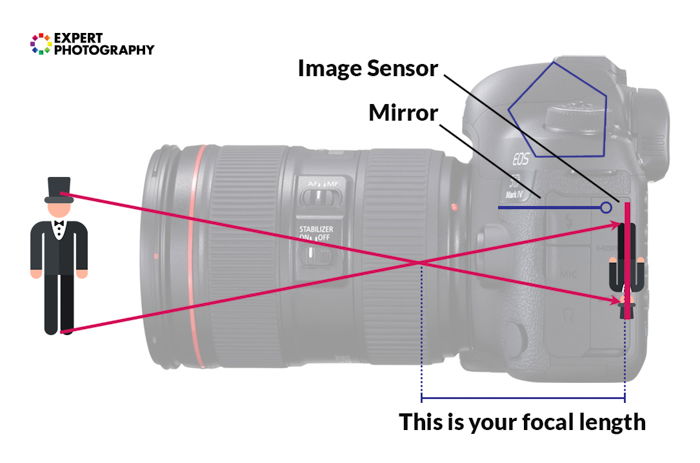
What Does Focal Length Determine?
A camera lens’s focal length is important because it determines the field of view. This is what makes a lens wide, standard, or telephoto.
Consider the placement of the point of convergence. The closer it is to the imaging sensor, the smaller the object appears. Now, imagine the point of convergence was much farther away from the image sensor. This would make the subject seem much larger.

So, a short focal length creates a wide field of view. Lenses with a shorter focal length are known as wide-angle lenses. The opposite is also true. A long focal length creates a narrow field of view. These lenses are known as telephoto lenses.
How Do Crop Sensors Affect Camera Lenses?
The film plane in 35mm analog cameras came in one size. This 36 x 24mm hole allows the film to be exposed correctly. Nowadays, with digital cameras, these sensor sizes have quite a wide range. Here, we talk about how the size of the camera’s sensor affects the cropping of your scene.
What Is the Crop Factor?
You may hear the photography terms full frame, 35mm equivalent, APS-C, or cropped sensor thrown around. The big difference is what you are capturing from your scene.
A full-frame or 35mm equivalent is the same thing. If a camera is listed as a full frame, it has the same size sensor as 35mm film cameras (36 x 24mm). APS-C, Micro Four Thirds, and one-inch sensors are all cropped when compared to a full-frame sensor
- APS-C (All Except Canon): These sensor sizes are 25.1 × 16.7mm. To get to the 36 x 24mm full-frame equivalent, we multiply the number by 1.5. This gives an APS-C sensor a crop factor of 1.5x.
- Canon APS-C: They have a sensor size of 22.5 × 15mm. To get to the 36 x 24mm full-frame equivalent, we multiply the number by 1.6. This gives a Canon APS-C sensor a crop factor of 1.6x.
- Micro Four Thirds (MFT): These have an 18 × 13.5mm sensor size. To get to the 36 x 24mm full-frame equivalent, we multiply the number by 2. This gives Four-Thirds systems a crop factor of 2x.
A crop sensor magnifies the focal length of the lens. So, a 35mm lens becomes 50mm with a Nikon 1.5x crop factor.
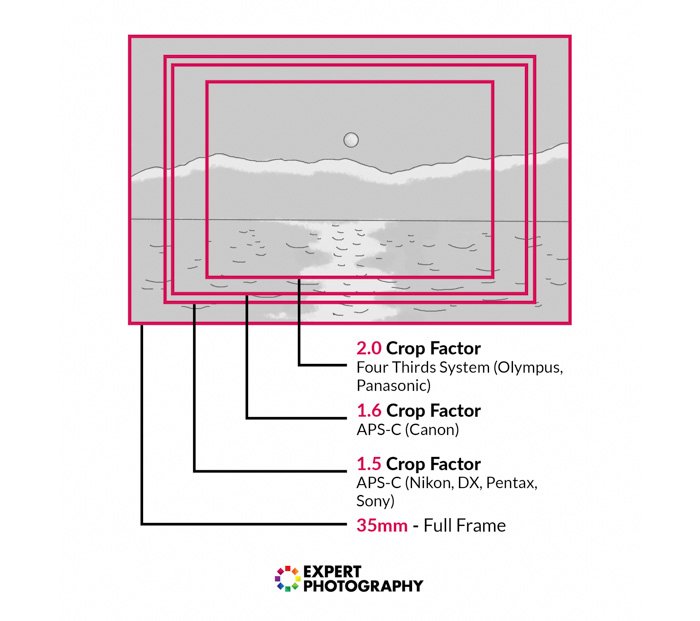
The Difference Between Zoom and Prime Lenses
Whether wide-angle, standard, or telephoto, every lens falls into one of two categories—zoom or prime. Zoom lenses let the point of convergence move closer or further away from the sensor. A lens with a fixed focal length is a prime lens.
The complexity of zoom lenses results in quality loss. Also, they do not let you open your aperture as wide as prime lenses. You must spend more on a zoom lens with the same image quality and brightness as a prime lens.
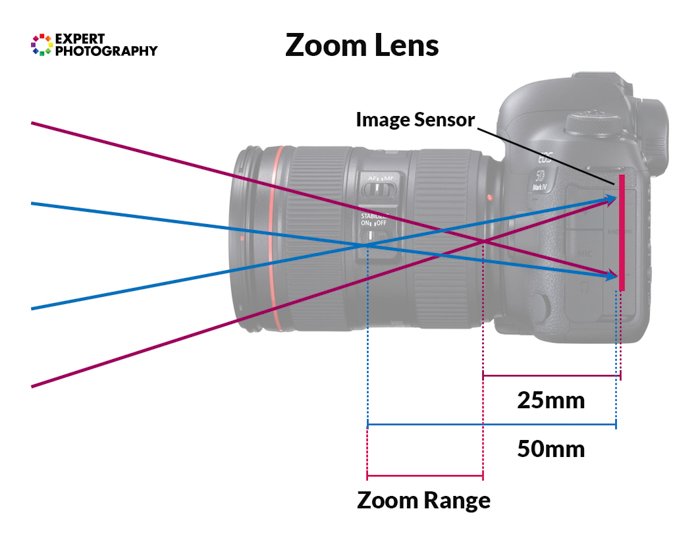
Lens Aperture
Aperture is another reason why photographers choose one lens over others. The word aperture means opening, hole, or gap and describes the size of the aperture ring of a lens.
This is where light passes through to make its way to the camera sensor. The aperture works like the pupil in our eyes. It controls the amount of light getting into the camera.
Aperture numbers are a fraction of the aperture’s diameter and the focal length of a lens. We see f-stops written as f/2 or f/11. If you are capturing a scene with a 100mm focal length lens at f/2, the diameter of your lens is 50mm across.
The f-number gets bigger, but the aperture gets smaller. An f/2 value is bigger than f/4, two stops brighter than an f/8.
Also, a larger aperture (smaller number) gives a shallow depth of field. A smaller aperture (larger number) gives you a bigger depth of field. The former means a smaller focal plane. The latter means more of your scene is in focus.
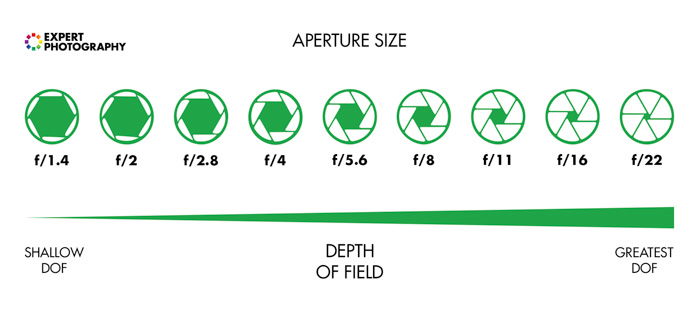
How Do Apertures Affect Lenses?
When choosing a lens, the most important factor is the maximum aperture (smallest f-stop). This number is written on the lens and included in its specifications. The biggest-sized aperture expresses how “bright” the lens is. And brighter is better.
Often, a lower f-number means a better image quality. For instance, you can expect an f/1.2 lens to outperform an f/1.8 lens in resolving power.
What Is Variable Aperture?
Variable apertures are different maximum apertures that your lens uses. It depends on the amount of zoom you use.
Aperture can cause some obstacles when it comes to zoom lenses. Let’s use a 70-300mm F/4-5.6 lens as an example. At 70mm, you can use the f/4 aperture, and the diameter is 17.5. (70 divided by 4.)
If we zoom in completely, we go from a 70mm to 300mm focal length. The images you capture are magnified by 4.3%. At 300mm, your maximum aperture is f/5.6, and the diameter is 54mm. (300 divided by 5.6.)
But why can’t the lens be f/4 throughout the zoom range? At 300mm, an f/4 aperture would be 75mm. (300 divided by 4.) This would be too big to fit into the slim lens body.
These camera lenses offer more variability, but they have their disadvantages too. Generally, you sacrifice image quality. Many photographers see variable lenses as inferior and avoid them.
Non-variable aperture lenses offer some significant advantages. They have a better image and build quality than their counterparts.
Camera Lens Markings
The numbers and letters you find on a lens are all very important. The first number is usually the lens’s focal length. This number is represented in millimeters (mm).
If you see one number rather than a range, it means it’s a prime lens. It could say 24mm, 50mm, 85mm, or something similar. A focal length range has two numbers separated by a dash. For example, a popular focal range is 70-200mm.
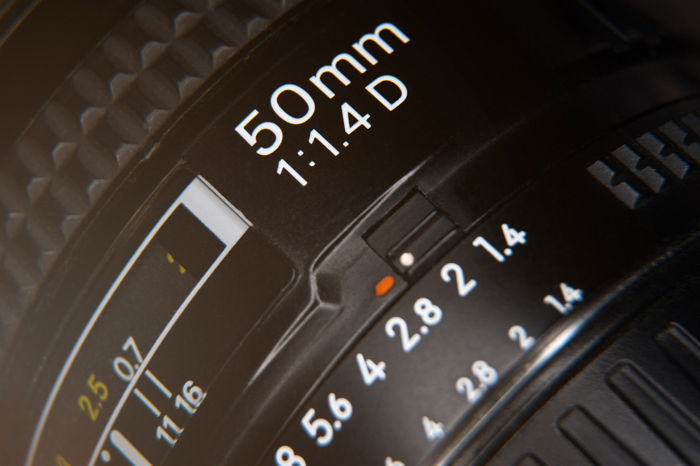
The second number you find on a lens is usually the lens’s maximum aperture. Your zoom lens has a fixed maximum aperture if you have one number.
If a dash separates two numbers, your zoom lens has a variable maximum aperture. It looks something like “F/4-5.6.” Prime lenses do not have a variable maximum aperture.
What Other Markings Are On a Lens?
- DX (Nikon), EF-S (Canon), or E (Sony): These indicate the lens was created for smaller camera bodies with APS-C size sensors. These lens’s focal lengths have a crop factor, taking into account the smaller sensor. These lenses are smaller and lighter than their siblings. They cannot be used on full-frame cameras.
- USM, HSM, or SWM: These stand for “Ultrasonic Motor,” “Hypersonic Motor,” and “Silent Wave Motor.” They are ultrasonic vibration motors that let you autofocus faster. The ones used in higher-end products are much quieter than those in cheaper lenses.
- Zero With a Strike-Through (Ø): This symbol on a lens is usually followed by a number. This is the diameter of the front of the lens. It also marks the filter size you can use on the lens. It’s necessary to know this number when purchasing screw-in filters.
- Infinity (∞) to 0.5 m: Sometimes, you may find an infinity symbol (∞), then a dash, and then a distance indicator. This is the focusing range of the lens. This indicates the closest focusing distance of the lens.
- Asph or ASP: This stands for “aspherical.” It shows that the lens has non-circular lenses inside. These lens elements can be used to reduce spherical aberrations.
- IS (Canon), VR (Nikon), or OSS (Sony): These stand for “Image Stabilization,” “Vibration Reduction,” and “Optical SteadyShot.” This means your lens has a built-in floating lens element, motors, and electronics. These lenses sense and counteract any movement or shake.
- Macro or CRC (Close Range Correction): This marking means the lens is specifically designed to be sharp at close range.
- Other: Lens manufacturers use a slew of markings on their lenses. Canon likes to mark its professional lenses with a red “L,” and Sigma uses EX for its professional and exclusive lenses. You can read our Canon, Nikon, Sony, Sigma, and Tamron lens abbreviations guides.
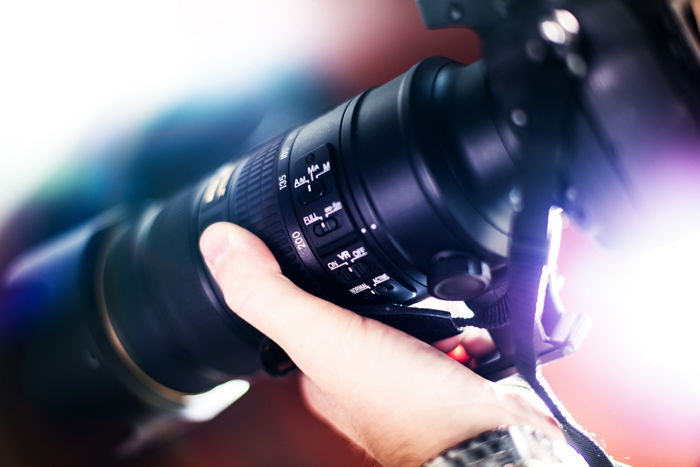
What Is Camera Lens Focusing?
Lenses have a point where the light rays going through them converge. This is called the focal point.
Focusing happens within the lens. This happens by moving one or more lens elements closer to or farther away from your camera’s imaging sensor.
The lens “bends” the light and forces it to converge at different distances from the sensor. The ideal convergence needs to fall exactly on your sensor. When you achieve that, you have a perfectly focused image or subject.

How Does Autofocus Work?
Autofocus is just one way to gain a sharp focus. With the Autofocus mode, the camera signals the lens, forcing it to change its focal placement.
How much of your scene is in focus depends on four different factors. These are the aperture setting, the distance between you and the elements in the scene, and their spatial relationship.
Many modern cameras have many focus points spread over your viewfinder. They can be moved or even work in groups to select a more progressive focus blanket.
Nowadays, you can choose between in-camera focus modes. These affect the alignment of the focus points and the speed of focusing. 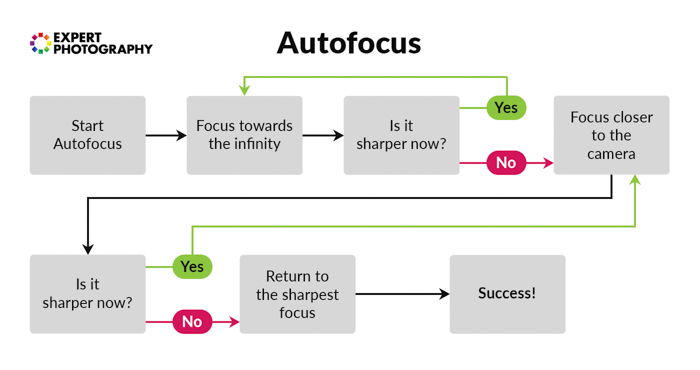
How Does Manual Focus Work?
Apart from letting your camera focus, there is the manual focus option. It can be a waste of time to refocus when capturing a subject on the same focal plane that’s not moving closer or farther away.
Your camera might also have trouble autofocusing in other situations, like with low contrast or in low light. Shooting through glass is an excellent example of an autofocus issue. In these instances, you need to set the focus manually.
Older cameras had a focusing screen that helped the manual focus. Modern cameras place a red halo around objects when they are in focus. This is called focus peaking. You can do it in the electronic viewfinder in mirrorless cameras, too.
DSLRs let you focus in Live View mode. This means you can zoom into the picture on the LCD screen.
How to Use Autofocus with a Manual Setting
Many lenses have a special feature that lets you autofocus the camera and then modify the result manually. But some lenses don’t let you manually adjust the focus in Autofocus mode.
Read your lens’s user manual to see if it can do that. You can break the focus ring if you force it.

What Are Internal and External Focus?
There are two different types of focusing—internal and external. You know you have external focusing if the lens’s front element extends when you focus.
This is handy to know for filters, especially polarizing filters. If your lens turns when focusing, you must focus before setting your filters to their desired effect.
What Are Distance Indicators?
Lenses, especially analogs, have built-in distance indicators. These are to focus, especially when you need to focus to infinity. They are not exactly precise. But they are a good guide for how to turn the lens to focus at a particular distance.
What Are Depth of Field Indicators?
The lenses that have distance indicators usually have depth-of-field indicators too. These are marked with numbers like 22, 11, and 8. These numbers may differ depending on the lens, design, and properties.
These markings designate how much of your scene is in focus at a particular aperture. These are always in relation to the distance indicators and the aperture ring. So always check these together.

What Are Camera Lens Mounts?
Your lens connects to your camera body via lens mounts. There are three main types of mounts. There are screw mounts in film (analog) cameras, a lock ring in medium-format analog, and the third is a bayonet fitting.
The first two are very rarely used these days. You may encounter them on vintage lenses.
There are many benefits of bayonet fittings. They allow lenses to be changed faster. And they secure onto the camera body in a much safer way.
Also, bayonet fittings allow electronic connections between the camera and the lens. This is what allows autofocusing and electronic control of the aperture.
Each camera manufacturer has its own lens mounts. The only exception is the Micro Four Thirds mount, which is backed and used by several manufacturers. It is also possible to buy adapters so lenses from one manufacturer can be used on other manufacturer’s camera bodies.
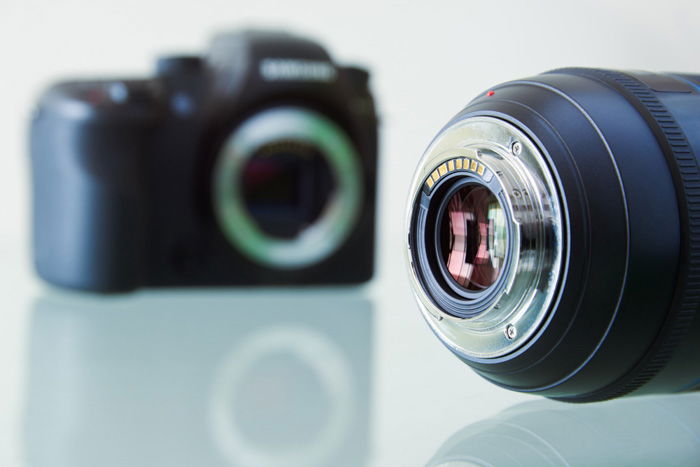
What Is Image Stabilization?
Many modern camera lenses have built-in image stabilization (IS). This feature lets you capture scenes handheld that were previously challenging. This technology uses the latest gyroscopic sensors and motors to stabilize any movement in the lens elements.
Telephoto lenses are the ones that feature image stabilization. This is because longer focal lengths suffer worse from camera shake with shaky hands. Your images might be blurred.
The rule is to shoot at a shutter speed no lower than your focal length. A 50mm lens‘s limit should be 1/60 s (seconds). A 300mm lens should be in a 1/250 to 1/300 s range. Image stabilization lets you bring this setting down to something more user-friendly.
Some cameras have built-in image stabilization. This turns every one of your lenses into a stabilized eye. But not all vibrations are reduced by image stabilization. There is a limit to how far this floating lens element can move.
On top of this, camera movements that you would like to keep might be removed. For example, panning shots would not work so well. Plus, Image stabilization is quite power-hungry. Your batteries might not last as long as they would normally. So, it’s best to turn it off when not using it.

What Are Camera Lens Filters Good For?
Most lenses have a filter thread in the front where you can screw on camera lens filters. These filters cover a range of options, including adding tints or darkening a scene.
Filter Threads
Every threaded filter has a different size, so it is crucial to choose the right one. The filter shows the threading size that looks something like Ø=68mm. The significant benefit here is you can use these filters as lens protection.
Many photographers add a skylight or UV filter at the front. This stops scratches, paint, dirt, or bumps from affecting the front lens element. Circular polarizing lens (CPL) and neutral density (ND) filters are the two other most commonly used ones.
And ND filters fall into two categories. There are graduated ND and variable ND filters. You can read our roundup on the best polarizing filters to buy.

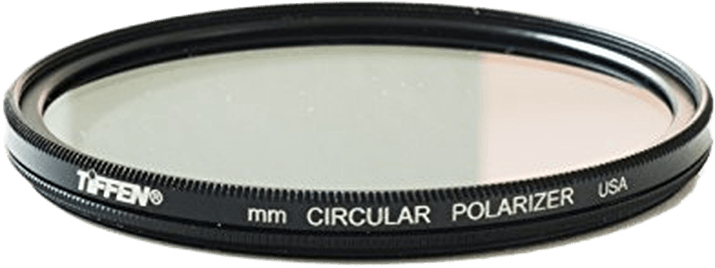
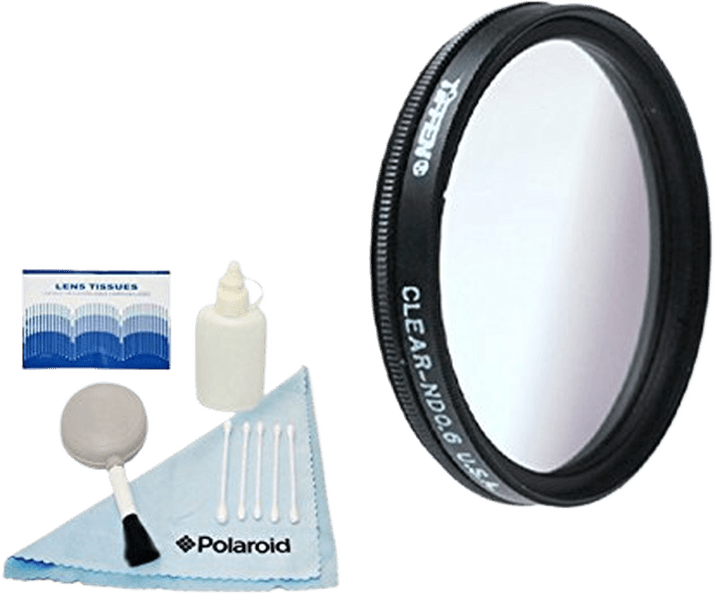
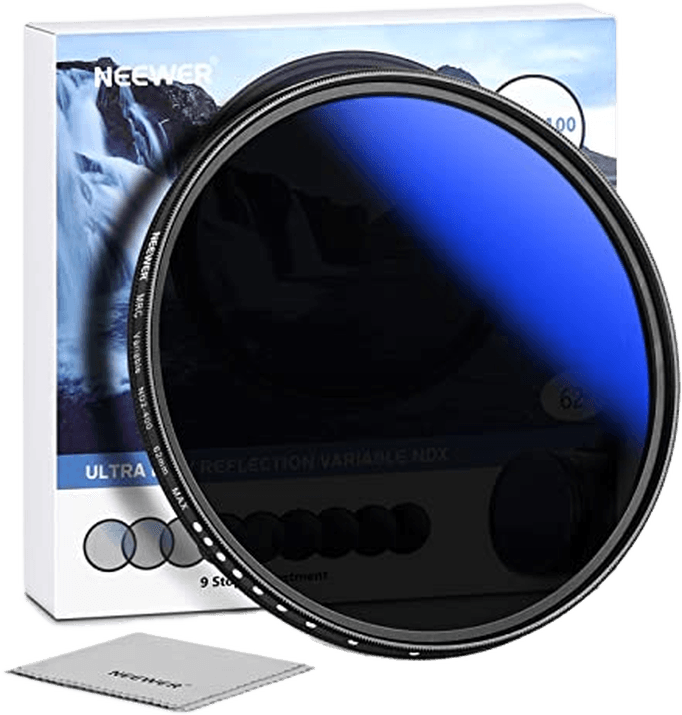
Drop-in Filters
Drop-in filters or square filters fit into a holder—the holder screws into the lens bezel. The benefit here is that each filter you use does not have to be screwed into the lens. This is a cheaper option but less versatile than the ones with filter threads.
Rear Filters
Some lenses do not accept filters at the front of the lens. This is especially true for specialty lenses like extreme-wide-angle or fisheye lenses.
The front of these lenses is rounded. This leaves no space for a traditional front filter. Some of these lenses have a slot at the rear of the lens where a filter can be added.
Lens Hoods
When direct sunlight hits your lens, it creates “flares” or “hot spots.” The sun could be hitting at an angle because you photograph the sun straight on. A lens hood stops the direct ambient light from ruining your images.
Something like this is tough to control when using a wide-angle lens with an 84-degree field of view. Some ultra-wide lenses have the lens hood already built-in.

Teleconverters
A teleconverter modifies the behavior of the lens you are using. These secondary lenses sit between a camera body and a lens. They have an optical element within them, which refocuses the light. By refocusing the light, they effectively extend the range of your focal length.
The downside is you lose some light as the minimum aperture increases at the same ratio. The f/2.8 becomes f/4 and f/5.6, respectively. This results in quality loss, too.
The most common teleconverters are 1.4x and 2x. A 1.4x teleconverter on your 70-200mm lens gives you an effective focal length of 98-280mm. You can read our article on the best teleconverters to buy.
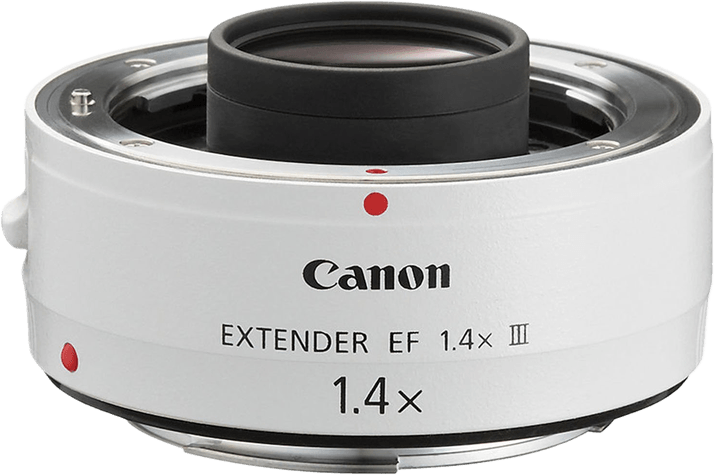
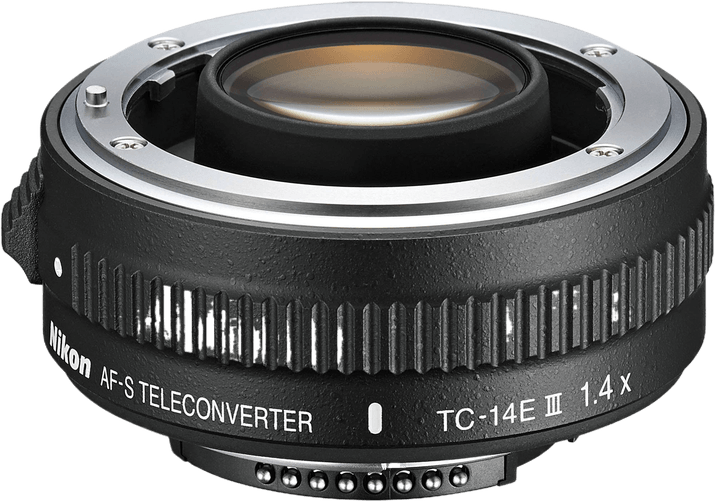
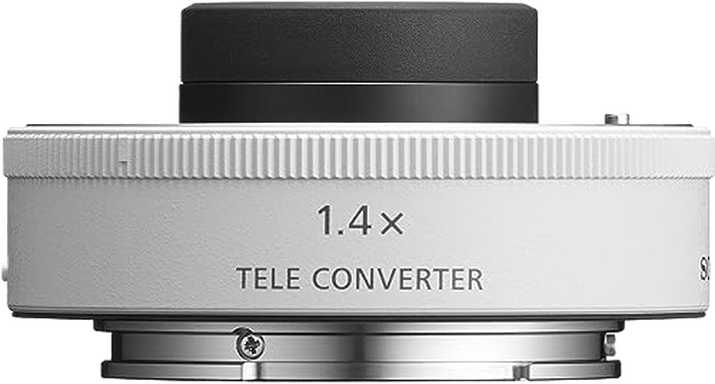
How Can You Focus on Close Subjects?
Every lens has a minimum focus distance. This means you can only place your lens at a certain distance from your subject before you can no longer focus.
But macro lenses are only one way to get closer to your subject. There are three other ways to capture small objects at a ratio of 1:1 and closer.
1. Use Macro Filters
A close-up lens (also known as a close-up filter or macro-filter) is a way you can get close to your subjects. This secondary lens enables you to capture macro shots without needing a special lens.
Close-up lenses work the same way as reading glasses. They let the lens focus more closely than it would normally. These are easy to use. Just screw it on the thread at the front of the lens, and away you go.
The benefit is that you can stack them and use multiple filters together. A +1, +2, and +4 give you +7 steps of closeness.
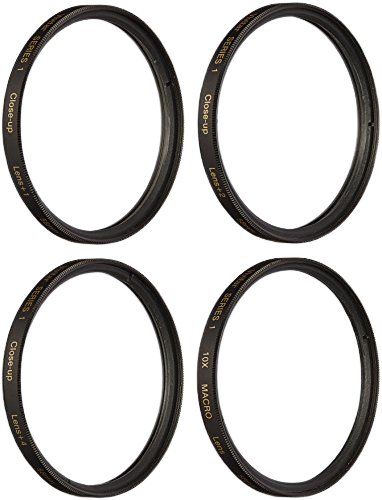
2. Use Extension Tubes
Macro extension tubes are lens spacers. They do not have optical elements inside them like the teleconverters do. So, extension tubes are cheaper.
They usually come in sizes 7mm, 14mm, and 28mm. You can stack them together. (7mm + 14mm + 28mm = 49mm extension spacer.)
Extension tubes reduce the focusing range of the lens you are using. You can bring your subjects much closer to your camera. But you lose the possibility of focusing on infinity.
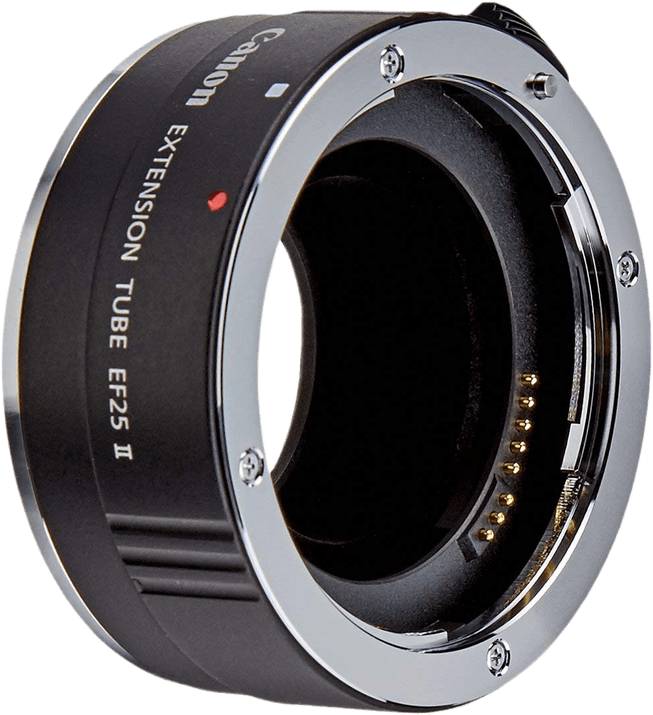

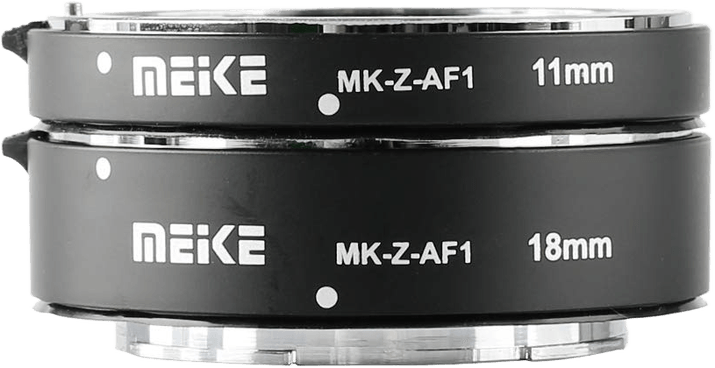
3. Reverse a Camera Lens
The other cost-effective option is to reverse a lens you already own. This might be strange, but it works well. Turn the lens off and turn it around so the front lens element faces the inside of your camera. Now, you can focus on items very closely.
There are lens reversing rings that connect your camera mount to your reversed lens.
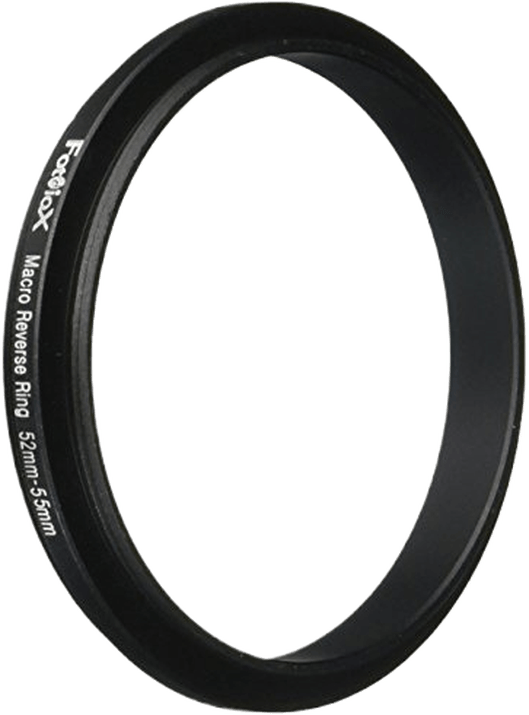
What You Need to Know About Aberrations and Distortions
Camera Lens Aberration
Light travels through a lens and bends when it hits the glass inside. But not all light bends the same way. And some colors are affected more than others. This could be because of minor imperfections, diffractions, or refractions of the light.
Lens aberrations fit into two categories. Some happen with color (chromatic aberrations). And some occur with single points of light (monochromatic aberrations).
Also, vignetting means that the brightness and saturation of an image decrease towards the edges of the image.
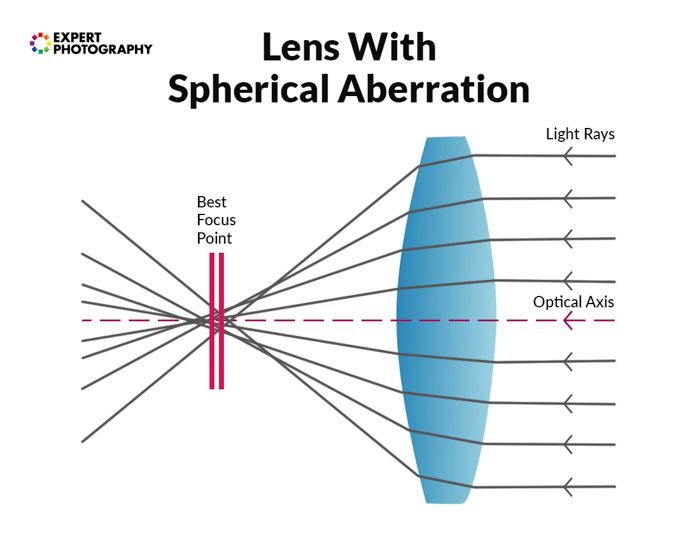
Camera Lens Distortion
Every lens has a varying degree of distortion. Generally, you find smaller amounts when using prime lenses. This is down to fewer elements needed for the lens to work.
Constantly improving technology helps to keep distortions to a minimum. Tilt-shift lenses are also great solutions to these problems.
There are two main types of distortions. Barrel distortion makes the center of the image appear closer than the edges. Pincushion distortion makes the center appear much further away than the edges do.
Wide-angle lenses are plagued with distortion. Their wide field of view must fit on a small, rectangular surface. You’ll notice the center seems unaffected. But expect straight lines to curve as you extend to the edges of the frame.
And if you have a mixture of the two mentioned above, you end up with mustache distortion.
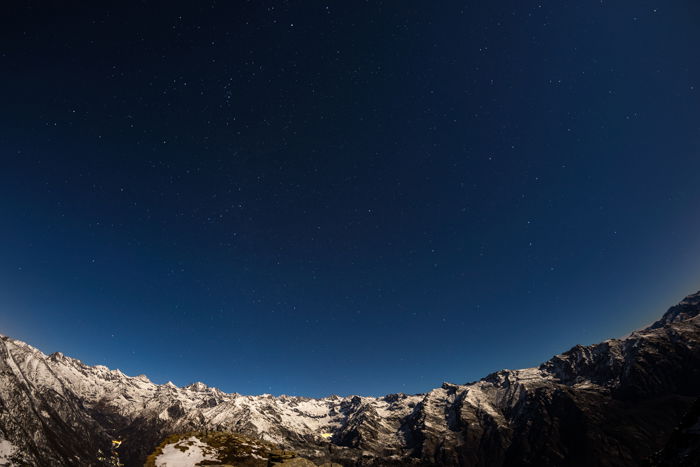
What Can Affect Camera Lens Sharpness?
Sharpness is crucial when you want to have quality photographs. This is why knowing what and how it can affect it is important.
Center vs Edges
The sharpness of your images comes down to how good your lens is. Also, for optimal sharpness, you need to use your lens correctly.
Lenses tend to be sharper in the center. The edges and corners are furthest from the sensor and can suffer some loss. The greater edge sharpness often appears in more expensive lenses.
Zoom Range
One of the biggest problems with variable focal length or zoom lenses is their sharpness range. A zoom lens has to compromise between many features. So, versatility pushes the sharpness from the top spot.
It is not always clear where the optimal sharpness lies. Some lenses are sharpest at the extremes of their range. Other lenses can be sharper around the center of the range.
There are a few lenses whose sharpest areas come and go throughout the focal length range. You need to get used to reading MTF curves to determine if your lens does this.
Aperture Range
The other big thing you need to understand is that a lens curve of sharpness changes with its aperture range. Shooting wide open, your area of focus is smaller. Go down a few stops, and you notice a huge difference. After the peak, your lens becomes less and less sharp but gradually changes.
We have to mention lens diffraction here as well. A smaller aperture can cause it, resulting in a loss of sharpness. When light waves meet a barrier on their way, their behavior changes. This happens when they hit a small hole. The aperture breaks its way.

Specialty Camera Lenses
We need to discuss other camera lenses besides zooms or prime lenses. Stepping out of the realm of wide-angle, standard, or telephoto lenses, a specialty lens is created for specific reasons.
What Is a Macro Camera Lens?
Macro lenses are specific glassware that allows you to capture small subjects and blow them up to bigger-than-life size.
Macro lenses are telephoto lenses that have a close near point. The near point is the closest point to the lens where the subject is in focus. This is why they can focus from 1cm to infinity.
These lenses can be expensive. Luckily, they have other uses besides shooting macro images. They also function as standard lenses.
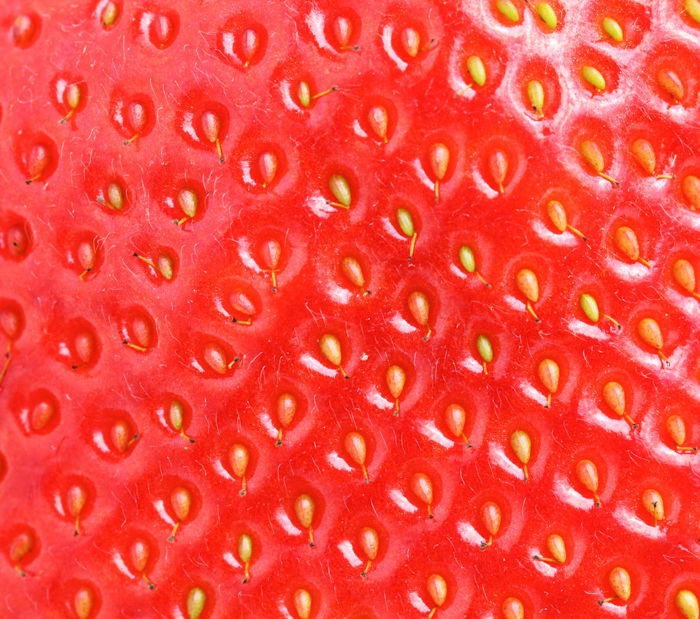
What Is a Tilt-Shift Camera Lens?
A tilt-shift lens mimics the possibilities a large-format camera gives us. Perspective distortion happens when a large building is at increasing distances from your camera. The top is further away from you than the bottom is. So, a parallax error is created.
Titl-shift lenses let you change the focal plane to match the relative distance of the building from the camera. This change from a perpendicular focal plane to a parallel one fixes the perspective problem.
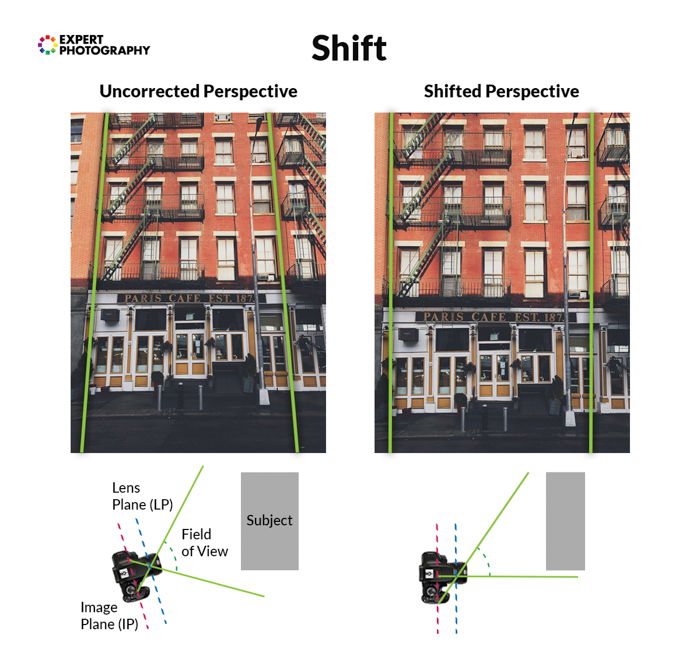
What Is a Fisheye Camera Lens?
Fisheye lenses are ultra-wide-angle lenses. They fall into the focal length category of 14mm and anything below. These lenses create a very unusual perspective in photography, usually resulting in a circular image.
When we use lenses that cause barrel distortion, we correct them to create a more realistic image. We embrace the distortion and use it to create something creative. For example, you can use them for sports, parties, or real estate photography.

Which Camera Lens Is Best for Photography?
You may be wondering what camera lenses are best for what. We summarize all the lenses we’ve discussed in our article.
Different camera lenses are designed for various purposes. Each offers unique features that cater to specific photography needs. Here’s a breakdown of some common types of lenses and their ideal uses. Follow the links for our more in-depth product reviews and recommendations:
- Standard or Normal Lenses: They are versatile lenses for everyday photography. They are fantastic for portraits, street photography, and documentary work. They render a perspective similar to what the human eye sees. They are good for achieving natural-looking images without significant distortion. These include 35mm, 50mm, and 85mm lenses.
- Wide-Angle Lenses: These are Ideal for landscape photography, architecture, and real estate. They capture a broader field of view, letting you fit more into the frame. They reduce perspective distortion and exaggeration of subjects close to the lens. These are camera lenses like 14-24mm and 16-35mm.
- Telephoto Lenses: They are Ideal for wildlife, sports, and event photography. They offer a narrow field of view, bringing distant subjects closer and isolating them from the background. They compress perspective, making distant elements appear closer together. Examples are camera lenses are 70-200mm and 100-400mm.
- Macro Lenses: These are perfect for close-up details of small subjects like insects, flowers, or products. They provide high magnification and excellent sharpness for extreme close-ups. For example, camera lenses are 60mm, 100mm, and 105mm.
- Prime Lenses: These camera lenses have fixed focal lengths, like 24mm, 50mm, and 85mm. They are known for their sharpness, wider apertures, and compact size. They are great for low-light conditions, portraits, and a shallow depth of field (blurred backgrounds).
- Zoom Lenses: These camera lenses have variable focal lengths, like 24-70mm and 18-135mm. They offer versatility by covering a range of focal lengths within a single lens. They are convenient for various situations, like travel or when changing lenses is impractical.
- Specialty Lenses: These camera lenses include tilt-shift and fisheye lenses. Tilt-shift lenses are used in architectural photography. They control perspective distortion and depth of field. Fisheye lenses create extreme distortion for artistic or unique perspectives.
The best lens for a specific purpose depends on various factors, including the type of photography you’re interested in. It’s best to consider your desired composition, lighting conditions, and personal preferences.
Having a selection of lenses to cater to different shooting situations and creative visions is beneficial. Here are some recommended budget lenses based on the seven categories listed above.
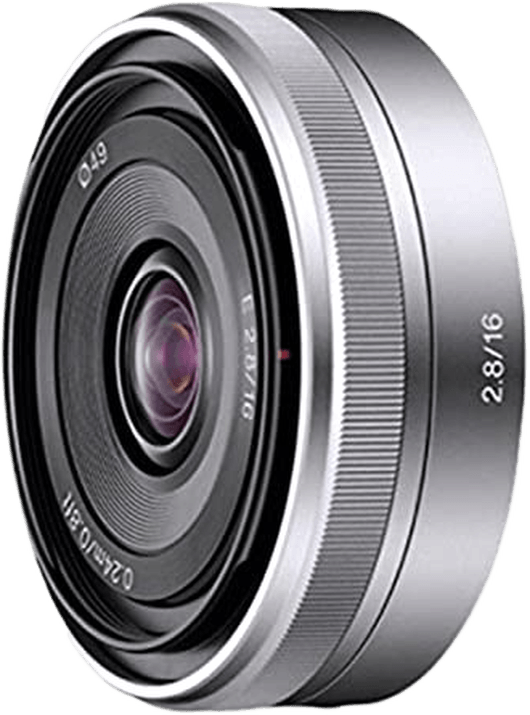

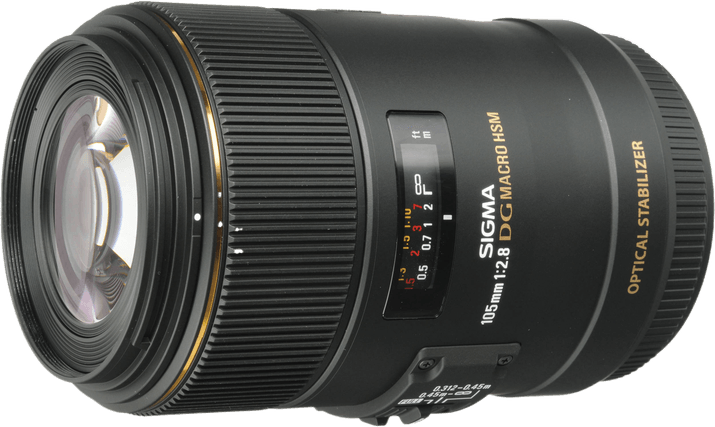


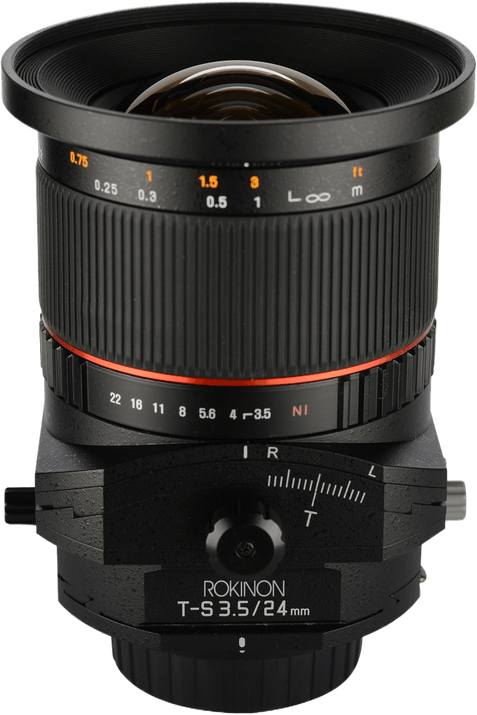
Conclusion: Our Camera Lens Guide
Camera lenses are essential parts of your photography gear. They might be some of the most expensive, too. It’s worth knowing what kind of camera lens you need and what features to pay attention to.
Sometimes, you can use filters or converters to save money and make your lens more versatile. So review our article and note which accessories will help you most. We hope you’ve learned a few tricks from our camera lens guide that will pay off!
Get off Automatic mode and take stunning photos for life with our Photography Unlocked course!



